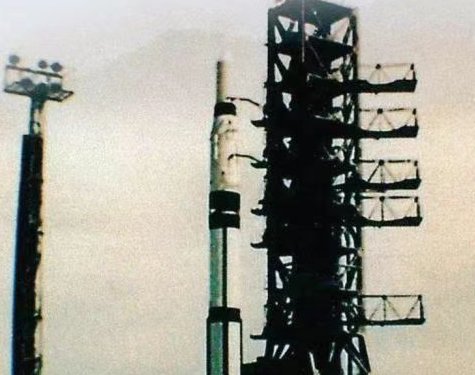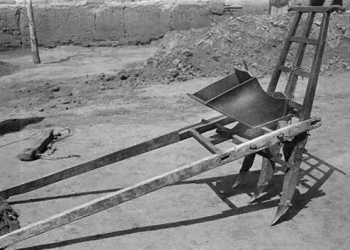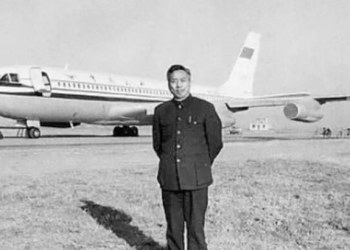On November 26, 1975, under the cold, vast sky of the Gobi Desert, a milestone in China’s space history was quietly made. From the Jiuquan Satellite Launch Center, the Long March 2 rocket roared to life, carrying with it China’s first recoverable remote sensing satellite—Jianbing-1 (Sentinel One). After orbiting the Earth 47 times over three days, the satellite re-entered the atmosphere and safely landed in central Sichuan on November 29. Onboard, it carried precious photographic and reconnaissance data—images that would mark the dawn of a new era for China’s space program.
At its core, Jianbing-1 was not just a scientific payload—it was a statement of intent. In an era where space was dominated by Cold War superpowers, this modest yet technologically ambitious mission showed that China was forging its own path to the stars through self-reliance, innovation, and determination.
The development of Jianbing-1 required a complete rethinking of rocket, satellite, and ground infrastructure technologies. The satellite’s return capsule was equipped with a honeycomb heat-resistant layer, capable of withstanding the searing 1,000°C-plus temperatures of atmospheric re-entry. This design not only protected the sensitive optical equipment onboard, but also demonstrated China’s growing mastery of re-entry vehicle engineering—a field that would prove crucial in future manned missions.
Equipped with a panoramic scanning camera, Jianbing-1 captured high-resolution images from low Earth orbit. These images were later analyzed for military reconnaissance, land resource surveys, and geological mapping, making this satellite China’s first operational tool for space-based earth observation.
Meanwhile, on the ground, engineers had constructed four new tracking and control stations, ensuring full telemetry coverage throughout the mission. This marked the first time China had implemented a comprehensive, real-time satellite tracking system across such a large area—an important precursor for more complex space operations to come.
Though developed with national defense needs in mind, Jianbing-1’s implications went far beyond the battlefield. It paved the way for the civilian use of remote sensing technologies in agriculture, disaster monitoring, urban planning, and environmental protection. The satellite’s success planted the seeds for a dual-use philosophy in China’s space strategy: one that balances national security and economic development.
From mapping uncharted forests and river basins to identifying mineral resources, the data collected by Jianbing-1 helped open new frontiers on Earth—through a lens in space. In many ways, this mission marked the beginning of China’s geospatial intelligence infrastructure.
Behind the technical success of Jianbing-1 was something even more significant: experience. This mission served as a full rehearsal for future re-entry missions, including human ones. Engineers tested recovery coordination, thermal protection systems, parachute deployment, and even soft-landing precision—all critical for ensuring the safety of astronauts in later decades.
Indeed, this mission became a cornerstone in the path to Project 921—China’s eventual manned spaceflight program. The heritage of Jianbing-1 can be traced in today’s Shenzhou capsules, Tiangong space stations, and lunar missions. It stands as a technological and symbolic bridge between the rudimentary years of rocket trials and the complex orchestration of modern orbital platforms.
In the international arena, the success of Jianbing-1 received little fanfare at the time. But for China, it marked a leap from theoretical ambition to operational capability. In just a few years, China had built its own recoverable satellite, launch vehicle, and tracking network—without importing technology or relying on foreign expertise.
In doing so, it joined the ranks of only a handful of nations capable of recovering a satellite from orbit—a distinction that placed it firmly among the elite in space technology. It was not just about putting something into space, but about bringing it back—whole, functional, and useful.Today, Jianbing-1 is remembered as the beginning of China’s remote sensing era, but its true legacy lies deeper. It helped shape the country’s strategic philosophy of independent innovation, a doctrine that still drives its space ambitions today.
At 7090.top, where we reflect on the technological triumphs and historical shifts of the 1970s through 1990s, Jianbing-1 stands out not just as a satellite—but as a symbol. It embodied a nation’s desire to rise, to observe, and to define its place in the cosmos with tools built by its own hands.From the desert launchpads of Jiuquan to the green hills of Sichuan, from sketchpads in underground labs to the starry silence of low Earth orbit, the journey of Sentinel One remains a powerful chapter in China’s story of innovation and cosmic aspiration.











